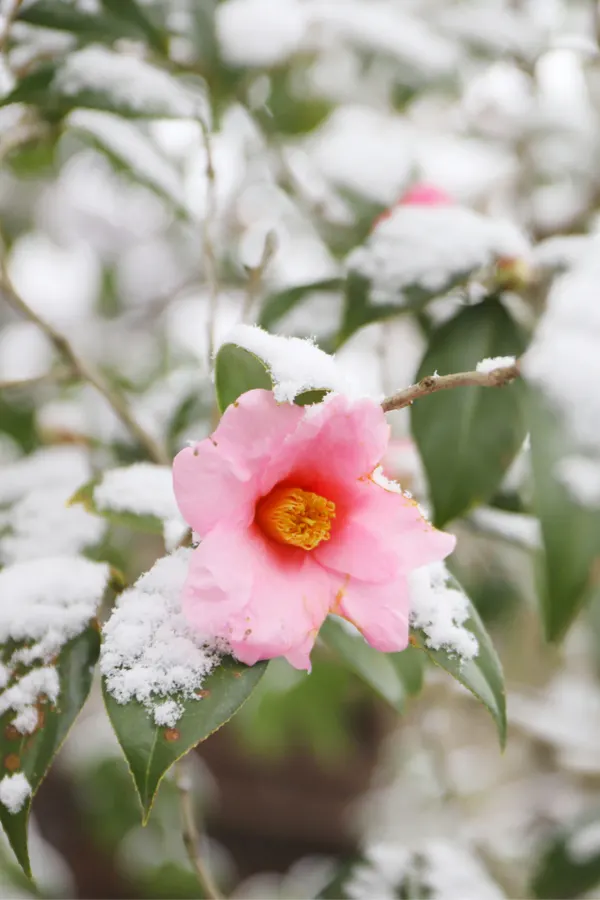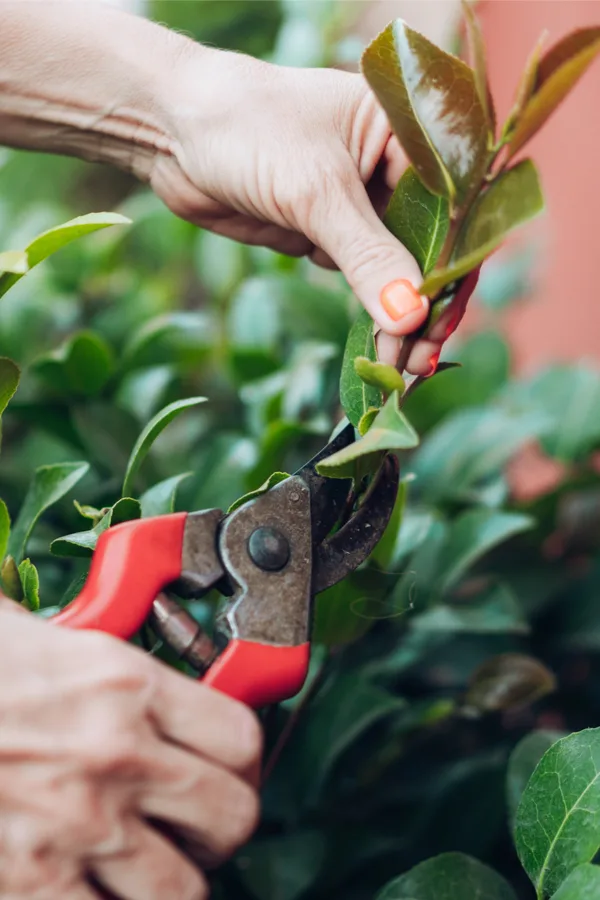If you happen to live in growing zones six through ten, then you know just how special it can be to grow and enjoy the incredible beauty of camellias, especially when they are blooming.
Camellias, whether found in shrub or tree form, are truly magnificent specimens. The long living specimen with its glossy foliage is a sight to behold. But the gorgeous plants really come alive when they are in full bloom and overflowing with a mass of fragrant flowers!
But for many, those amazing blooms can be hard to come by. In fact, generations of gardeners have struggled with the finicky bush and its sometimes fleeting blooms.

So much so that today, many homeowners shy away from planting camellias in their landscapes because of its reputation for being hard to grow. Unfortunately, that bad reputation isn’t fair at all to camellias.
One thing is for sure, it certainly shouldn’t be a reason to keep this incredible flowering beauty from gracing your lawn. Well, that is, as long as you live in a warm enough climate to grow them!
The truth is, armed with a few simple planting and maintenance tips, you can have your camellias blooming like nobody’s business. With that in mind, here is a look at the secrets to success for growing camellias.
How To Grow Camellias That Bloom Like Crazy!
The Right Climate
We touched on it at the beginning of the article, but the first key to success in getting camellias to have vibrant growth and big blooms is by planting them in the proper climate.
Most camellias are hardy throughout zones seven to ten, with some varieties being able to handle a bit cooler in zone 6. If you are trying to grow beautiful, blooming camellias in zone 5 or in the cooler areas of zone 6, it is almost impossible to have success.

Although breeding of the plant has produced some cooler-hardy versions, if you live in an area where an overnight low can get into the single digits, your plant will most likely suffer because of it. See : Understanding Growing Zones
Choosing The Right Location – How To Grow Camellias That Bloom Like Crazy
Beyond the obvious importance of growing in the right climate, where you plant your camellia in the landscape also plays a big role in its success. Camellias will grow and bloom best when planted in partially shady locations.
Camellias tend to suffer when they have to deal with the hot, scorching afternoon sun. For best results, find a location that receives sun in the morning or early evening, and not in the middle of the day. This allows their roots to stay cool, which, in turn, allows them to keep moisture in.
In addition, avoid planting near sources of extreme heat such as a brick wall that can retain daytime heat, or near vents or air conditioners that give off large amounts of heat and air.
Finally, when it comes to location, you need to select an area with soil that is slightly on the acidic side. Camellias will not grow well in alkaline soil, and they certainly won’t bloom well either.
Check the soil PH before planting with a PH tester. For optimum growing conditions, the soil needs to have a PH of 5.5 to 6.5.

If the soil tests higher and more to the alkaline side, amend with peat moss or an acid tone soil conditioner. This little bit of work now can pay off with big dividends come bloom time!
Planting For Success – How To Grow Camellias That Bloom Like Crazy
Another big key to long term success is properly planting camellias from the start. The first key to planting is selecting the right time to plant, and that all depends on how warm your climate is.
For warmer climates (zones 8, 9 & 10), planting should occur in the fall. This allows the camellia to spread it roots without heading right into a hot summer. For the cooler zones of 6 and 7, spring planting is the better choice.
This allows the roots to become established over the summer, providing more protection by the time winter rolls back around.
Next on the list for planting success is planting your camellia at the right height. When a plant is set into the ground, the top of the root ball needs to be two to three inches above the surrounding soil.

When planted too deep in the soil, the roots of camellias will struggle to grow and take hold. Deep planting can also result in plants becoming water-logged in periods of excessive wetness.
Dig your planting hole to twice the width of the container and equal to it’s depth. When planting, amend the soil with a good quality acidic soil conditioner to help loosen and fortify the dirt. Set the root ball in the hole, making sure the root ball is a few inches above the soil line.
This is the perfect time to water the root ball well. Next, back fill in around the roots, sloping the dirt up slightly to the base of the plant. Finish by applying no more than two inches of mulch around the plant to help regulate the soil temperature.
Watering Plants – How To Grow Camellias That Bloom Like Crazy
Newly planted camellias should be watered frequently when adequate rainfall is sparse. To check soil for moisture, stick your finger or a moisture meter down a few inches into the soil. If it is dry to this point, it is time to water.

For young plants, watering once a week is usually sufficient. For bushes two to five years old, it is still important to keep them well hydrated, especially in extremely dry conditions. Without adequate water, not only is their health compromised, so is their bloom cycle and intensity.
Bushes that are older than five years tend to be fairly drought tolerant and rarely require supplemental watering. That is, of course, unless extreme drought becomes an issue.
Fertilizing – How To Grow Camellias That Bloom Like Crazy
If there is one task that can really make for bigger and better blooms for camellias, it is fertilizing. Camellias use a lot of nutrients from the soil. Because of that, the nutrients need to be replaced to continue to provide nourishment for the plant to bloom.
Camellias should be fertilized every year about four to six weeks after they complete their bloom cycle. This allows the nutrients to be available as the shrubs begin to grow their new buds for the following year’s flowers.
Use a good quality fertilizer such as Dr. Earths Acid Lover Fertilizer that is made specifically for camellias, azaleas and other acid loving plants.
Avoid fertilizing shrubs in late summer or early fall as this will promote tender, new growth that can easily be damaged through the winter months.
Long Term Care / Pruning – How To Grow Camellias That Bloom Like Crazy
Keeping your camellias in tip top shape with a bit of pruning each year can also help to keep plants blooming. When pruning camellias, it all starts with selecting the right time to cut and shape.
The best time to prune a camellia is just after it has finished blooming. Begin by removing any old blooms that are lingering, and cut out dead or diseased wood.
Next, trim out a few branches on the inside of the shrub to help open it up a bit. This allows light and air to the plant, and will help encourage new growth.

When removing or shaping branches, cut back to just above the previous year’s growth. This will allow the branch to develop more shoots for a fuller, more robust bush, and more blooms!
So if you happen to live in a warmer climate suited for camellias, make this the year you fill your landscape with incredible blooms from an incredible plant!
Follow Our Facebook Page For Great Gardening Tips And Advice! This Is My Garden Facebook Page
This Is My Garden is a garden website created by gardeners, for gardeners. Jim and Mary Competti have been writing gardening, DIY and recipe articles and books and speaking for over 15 years from their 46 acre Ohio farm. They publish three articles every week, 52 weeks a year. Sign up today to follow via email, or follow along!

